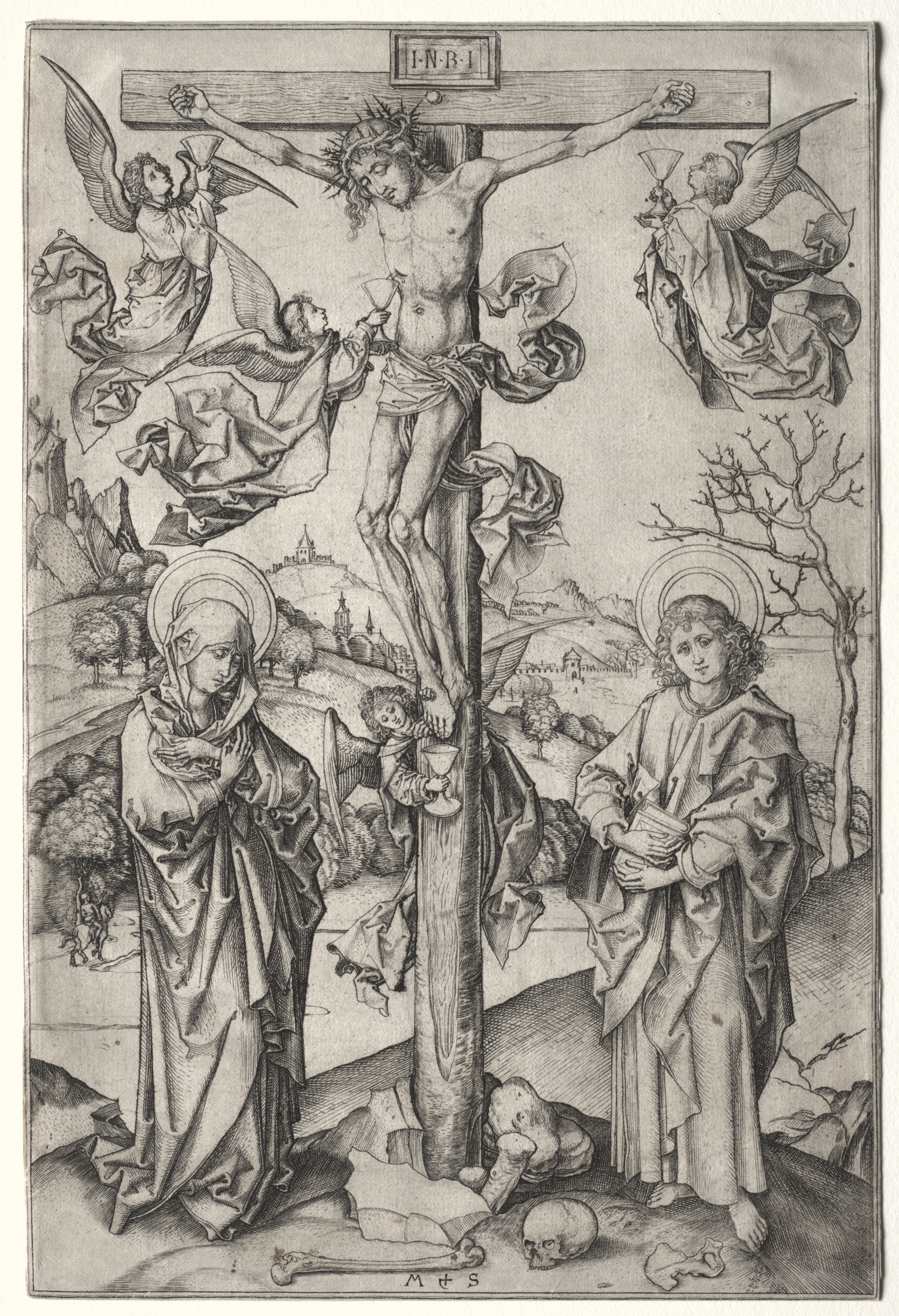The Cleveland Museum of Art
Collection Online as of April 20, 2024

The Crucifixion with Four Angels
c. 1475
Location: not on view
Did You Know?
The collecting of Christ's blood in chalices by the angels in this composition refers directly to transubstantiation, or conversion of the Eucharistic elements into the body and blood of Christ during Roman Catholic mass.Description
Martin Schongauer engraved several variations of the Crucifixion, often inspired by fifteenth-century Netherlandish paintings of the same subject. Here, upon a realistic landscape, the exaggeratedly thin and emaciated body of Christ hangs on the cross.The Virgin Mary and Saint John the Evangelist are mourning Christ's death at each side of the cross. Four hovering angels catch the blood from Christ's wounds and collect it in chalices. At the bottom of the cross, a bone and the skull of Adam, lie on the ground, and allude to Golgotha, the site of Christ's crucifixion, believed to be the spot where Adam died. The development of early printing methods during the fifteenth century offered more people personal devotional images that were previously limited to less affordable media, like paintings, sculptures, or illuminated manuscripts. Images of the Crucifixion functioned as devotional tools meant to help the faithful to meditate on Christ's suffering, sacrifice, and the redemption of humanity.- Sacred and Profane in Late Gothic Prints. The Cleveland Museum of Art, Cleveland, OH (organizer) (June 2-August 2, 1987).
- {{cite web|title=The Crucifixion with Four Angels|url=false|author=Martin Schongauer|year=c. 1475|access-date=20 April 2024|publisher=Cleveland Museum of Art}}
Source URL:
https://www.clevelandart.org/art/1947.483